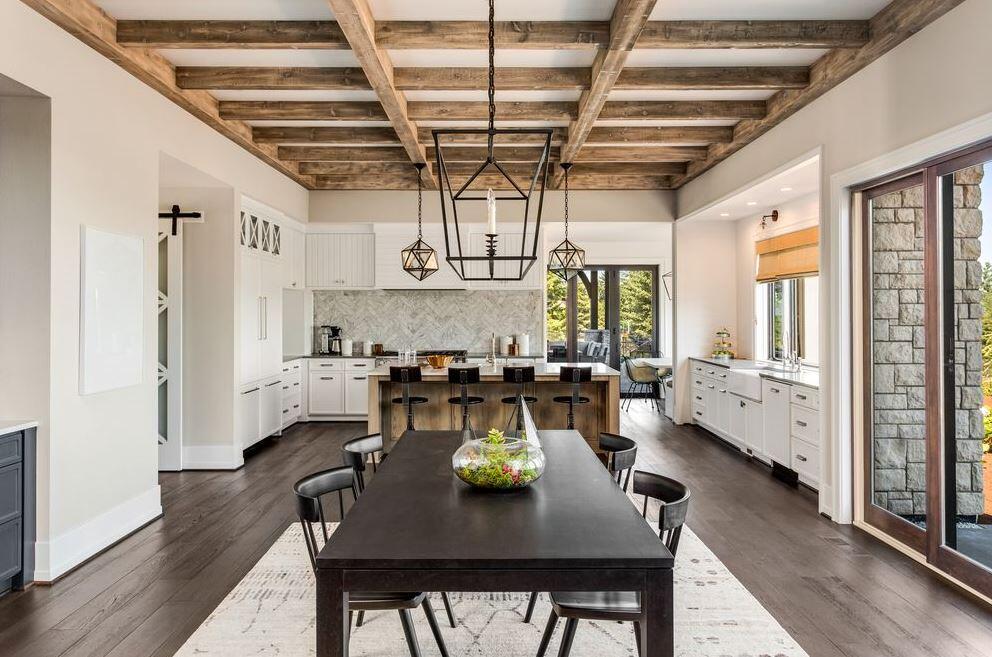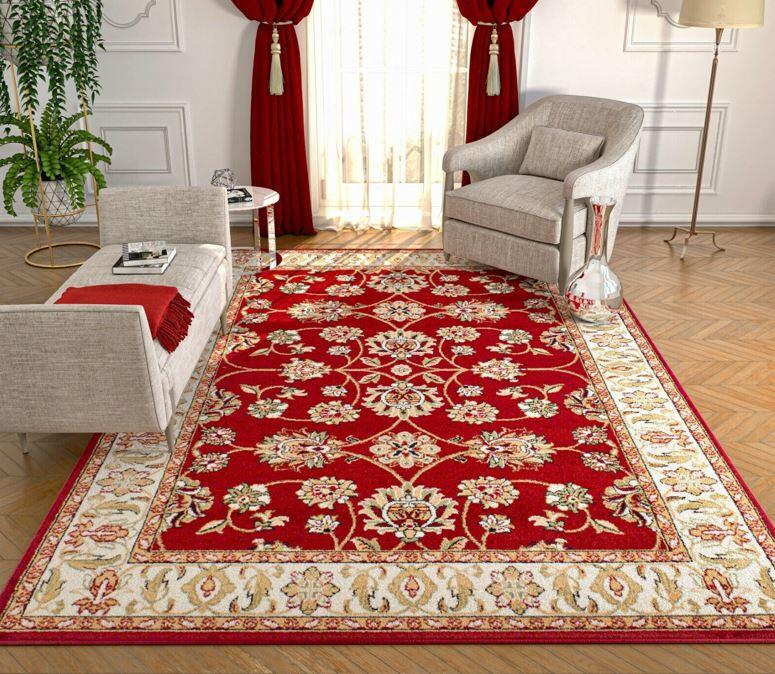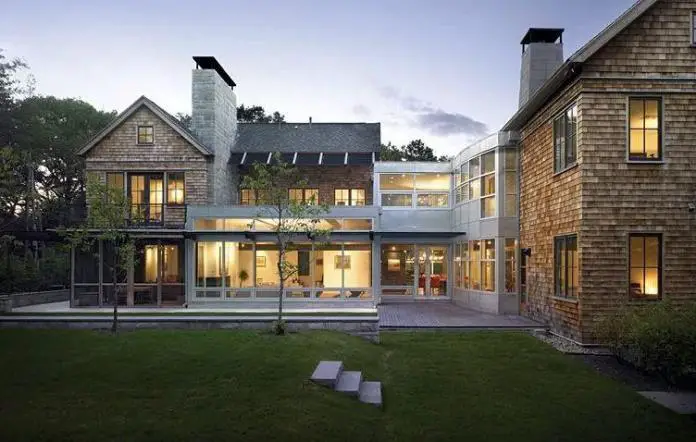In an era dominated by modern designs and contemporary aesthetics, there is a timeless charm in incorporating traditional style into your home. The traditional style embodies a sense of elegance, sophistication, and a connection to the past. By blending classic elements and rich textures, you can create a warm and inviting space that pays homage to the past while still maintaining a sense of comfort and functionality.
In this article, we will explore the key aspects and strategies to help you achieve a traditional style in your home.
Understanding Traditional Style
Traditional style draws inspiration from various historical periods, including the Georgian, Victorian, and Colonial eras. It emphasizes symmetry, classic proportions, and intricate detailing.

Architecture plays a fundamental role in setting the stage for a traditional style home. Traditional homes often boast distinct architectural features that contribute to their timeless appeal. Here are some key architectural elements to consider:
Moulding and Millwork
Crown mouldings, baseboards, and chair rails are essential elements of traditional architecture. These decorative mouldings add depth and visual interest to walls, creating a sense of elegance. Look for intricate designs and profiles that suit the overall style of your home.
Wainscoting and Paneling
Wainscoting refers to the application of wooden panels along the lower portion of walls, typically topped with a chair rail. This traditional architectural feature adds sophistication and character to a room. Raised paneling is another option, where the panels are more intricately carved or recessed.
Coffered Ceilings
Coffered ceilings are a hallmark of traditional architecture. These ceilings feature a grid-like pattern of sunken panels bordered by beams or mouldings. They add depth and visual interest to a room while creating a sense of grandeur.

Archways and Columns
Incorporating archways and columns can add a touch of classical elegance to your home. Arched doorways, either leading from room to room or as grand entrances, evoke a sense of grandeur. Columns can be used to divide spaces, frame entryways, or as decorative elements in the interiors.
Window and Door Treatments
Traditional architecture often includes windows and doors with intricate detailing. Consider incorporating window casings with decorative trim, such as pediments or keystones. Traditional-style doors may feature panelling or glass inserts with ornate designs.
Fireplaces
Fireplaces are a quintessential feature of traditional homes, serving as focal points in living rooms or bedrooms. Opt for a fireplace with a mantel that boasts ornate carvings and classic lines. Surround it with decorative tiles or a traditional-style hearth. If you need a more modern approach to heating your home, then traditional column radiators are a good option.

Exterior Details
The exterior of a traditional home can feature elements such as dormer windows, pitched roofs with rafters, gables, and decorative accents like dentil moulding or corbels. Incorporating these elements can help establish a cohesive traditional aesthetic from the outside in.
When selecting or renovating a home, look for properties that already possess traditional architectural features. However, if your current home lacks these elements, you can work with architects or contractors to incorporate them into your space. By adding architectural details, you can create a solid foundation for achieving a traditional style throughout your home.
Remember that architectural elements can be combined and tailored to suit your personal taste and the specific period of traditional style you wish to emulate. Whether you draw inspiration from Georgian, Victorian, or Colonial architecture, paying attention to these architectural features will go a long way in creating a traditional ambience in your home.
Colours and Patterns
Colours and patterns play a crucial role in establishing the traditional style in your home. By carefully selecting a warm and inviting colour palette and incorporating classic patterns, you can create a cohesive and timeless look. Here are some key considerations:
Colour Palette
Traditional interiors often feature a rich and warm colour palette that creates a cozy and inviting atmosphere. Earth tones, deep jewel tones, and muted hues work well in this style. Consider colours such as deep reds, warm browns, olive greens, and golden yellows. These colours evoke a sense of richness and elegance.
Neutrals
Neutrals are also essential in traditional interiors. Creams, beiges, and soft grays serve as a backdrop for the bolder colors in the space. These neutral tones provide balance and allow other elements, such as furniture and patterns, to stand out.
Upholstery Fabrics
Upholstery fabrics are an excellent opportunity to introduce patterns into your traditional space. Classic patterns such as floral, damask, toile, stripes, or plaids can be incorporated into sofas, armchairs, ottomans, and throw pillows. Choose fabrics with rich textures and a sense of luxury, such as silk, velvet, or brocade.
Draperies and Curtains
Window treatments play a significant role in traditional interiors. Opt for luxurious and heavy fabrics, such as velvet or silk, in solid colours or classic patterns. Consider long and flowing curtains with decorative tiebacks and valances. These elements add elegance and frame the windows beautifully.
Wallpaper
Wallpaper can be an excellent way to infuse pattern and depth into your traditional space. Look for wallpapers with intricate designs, damasks, or subtle prints. Consider using wallpaper in a dining room, or entryway, or as an accent wall in a bedroom or living room. It can instantly transform a space and add a sense of traditional charm.
Rugs and Carpets
Traditional-style rugs and carpets are essential for grounding a room and adding warmth. Look for Oriental, Persian, or Aubusson-style rugs with intricate patterns and rich colors. These rugs can be used in living rooms, dining rooms, bedrooms, or even hallways to tie the space together and provide visual interest.

Accent Colors
In addition to the foundational colour palette, accent colours can be introduced to highlight specific elements or add pops of colour. Consider incorporating accent colours through artwork, decorative accessories, or even painted furniture. Deep blues, burgundies, or emerald greens can be used sparingly to create visual interest and depth.
Remember to strike a balance when incorporating colours and patterns. Choose a dominant colour palette and use patterns strategically to avoid overwhelming the space. Mixing solid colours with patterns can create a visually appealing contrast.
By selecting a warm and inviting colour palette and integrating classic patterns, you can successfully achieve a traditional style in your home. The careful use of colours and patterns will contribute to the overall ambience and aesthetic, creating a space that exudes timeless charm and elegance.
Creating Traditional Spaces
a) Living Room: Arrange furniture symmetrically to establish a sense of balance. Opt for a plush sofa and matching armchairs surrounding a coffee table. Add a touch of formality with a grand chandelier or a set of classic table lamps. Incorporate a fireplace, if possible, as it is a hallmark of traditional living rooms.
b) Dining Room: Set the stage for elegant dinners with a large wooden dining table, complemented by upholstered chairs. Incorporate a statement chandelier above the table and adorn the walls with framed artwork or mirrors in ornate frames.
c) Bedroom: Select a four-poster or canopy bed to establish a focal point. Use layered bedding with luxurious fabrics and intricate patterns. Add a vanity table with an antique mirror and a cozy seating area for a touch of sophistication.
d) Kitchen: Incorporate traditional cabinetry with raised panel doors and decorative moldings. Opt for a farmhouse-style sink, classic hardware, and pendant lighting. Consider adding a kitchen island with seating to create a gathering space.
Finishing Touches
a) Accessories: Display decorative items such as porcelain vases, antique clocks, and framed artwork. Incorporate collections or heirlooms to add a personal touch and enhance the traditional aesthetic.
b) Flooring: Install hardwood floors with intricate detailing or consider classic patterns like herringbone or parquet. Rugs with oriental or Persian designs can add warmth and texture to your traditional space.
c) Lighting: Choose lighting fixtures that align with the traditional style, such as crystal chandeliers, brass sconces, or Tiffany-style lamps. Proper lighting will enhance the ambiance and showcase the architectural details.
Conclusion
Embracing the traditional style in your home allows you to create an environment that exudes timeless elegance and comfort. By incorporating architectural details, selecting classic furniture pieces, and paying attention to colors, fabrics, and textures, you can create a space that embraces the traditional style.











When properly installed and maintained, tile flooring can last for many years, often outlasting other types of flooring materials.
Bringing the traditional style into your home is like taking a step back in time while maintaining a timeless charm. Incorporating vintage furniture pieces, ornate patterns, and warm color palettes can create a cozy and inviting atmosphere that pays homage to the past. Mixing traditional elements with modern conveniences strikes a balance between nostalgia and functionality, making your home a unique blend of old-world charm and contemporary comfort.